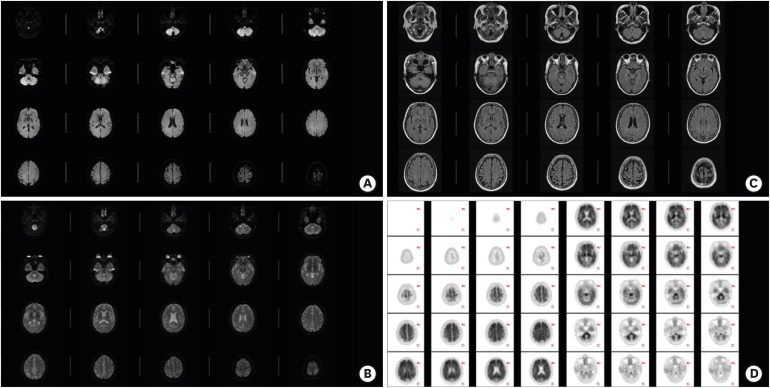A Case of a Patient Who Presented with Rapidly Progressive Dementia and Capricious RT-QuIC Results.
Dementia and neurocognitive disorders
Pub Date : 2020-03-01
Epub Date: 2020-03-16
DOI:10.12779/dnd.2020.19.1.36
引用次数: 1
Abstract
Creutzfeldt-Jakob disease (CJD) is the most common prion disease in humans. Once formed by unknown cause, PrPsc can make the normal cellular PrP (PrPc) transform into the pathogenic PrPsc in a cascade. Consequent extensive neuronal loss causes dementia, involuntary movement, psychosis, and incoordination. The criteria for clinical diagnosis include cerebrospinal fluid (CSF) biomarkers (e.g., 14-3-3 protein and t-tau), specific magnetic resonance image (MRI) finding, electroencephalography (EEG), and clinical symptoms.1 Recently, in vitro protein misfolding amplification system, the real-time quakinginduced conversion assay (RT-QuIC), for the detection of PrPsc in CSF was developed and showed ultra-high sensitivity and specificity, amending the diagnostic criteria.2 Here, we report the case of a patient without obvious clinical symptoms of sporadic Creutzfeldt-Jakob disease (sCJD) except rapidly progressive cognitive decline and a positive RT-QuIC assay who was not CJD.

1例患者表现为快速进展性痴呆和反复无常的RT-QuIC结果。
本文章由计算机程序翻译,如有差异,请以英文原文为准。
求助全文
约1分钟内获得全文
求助全文

 求助内容:
求助内容: 应助结果提醒方式:
应助结果提醒方式:


